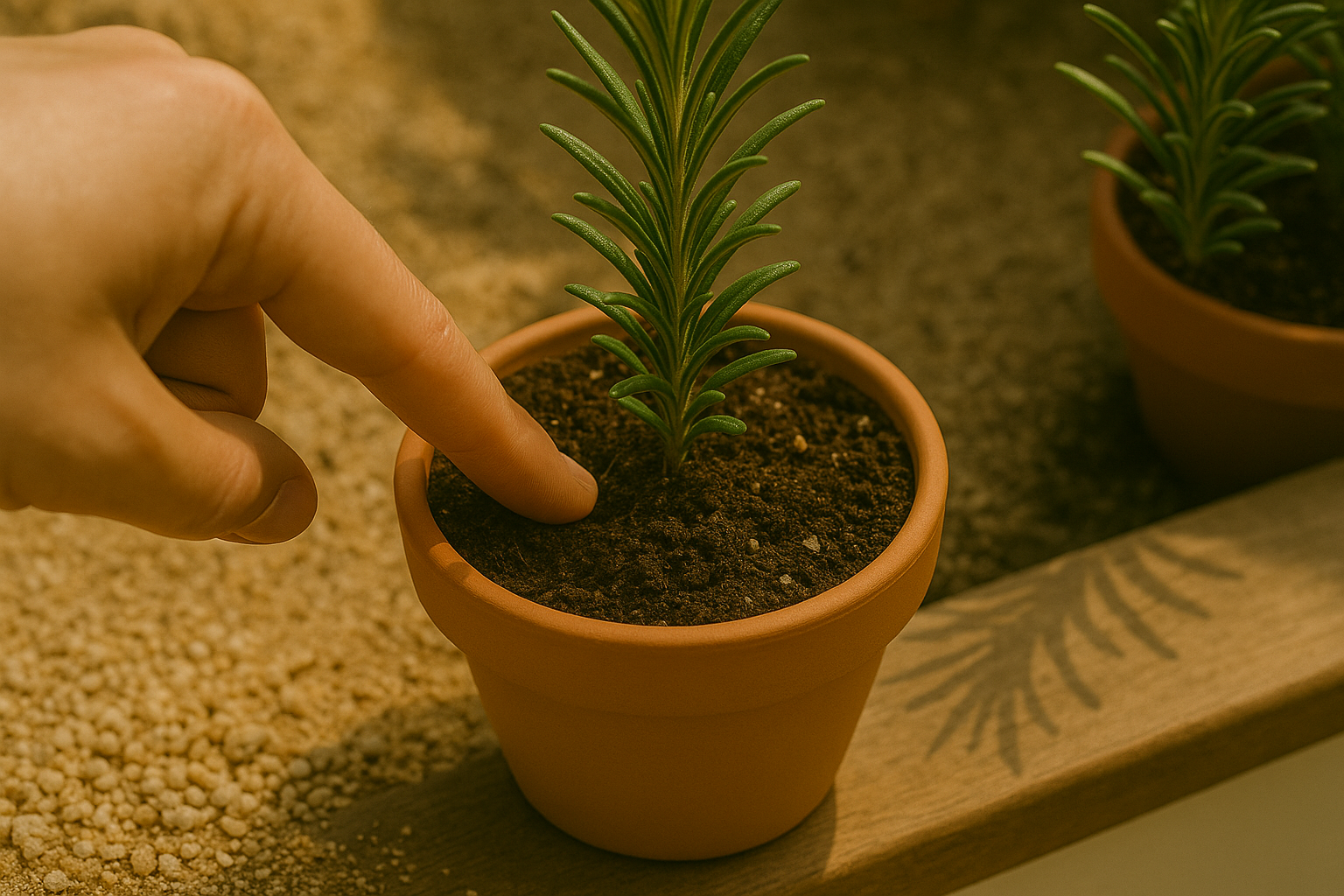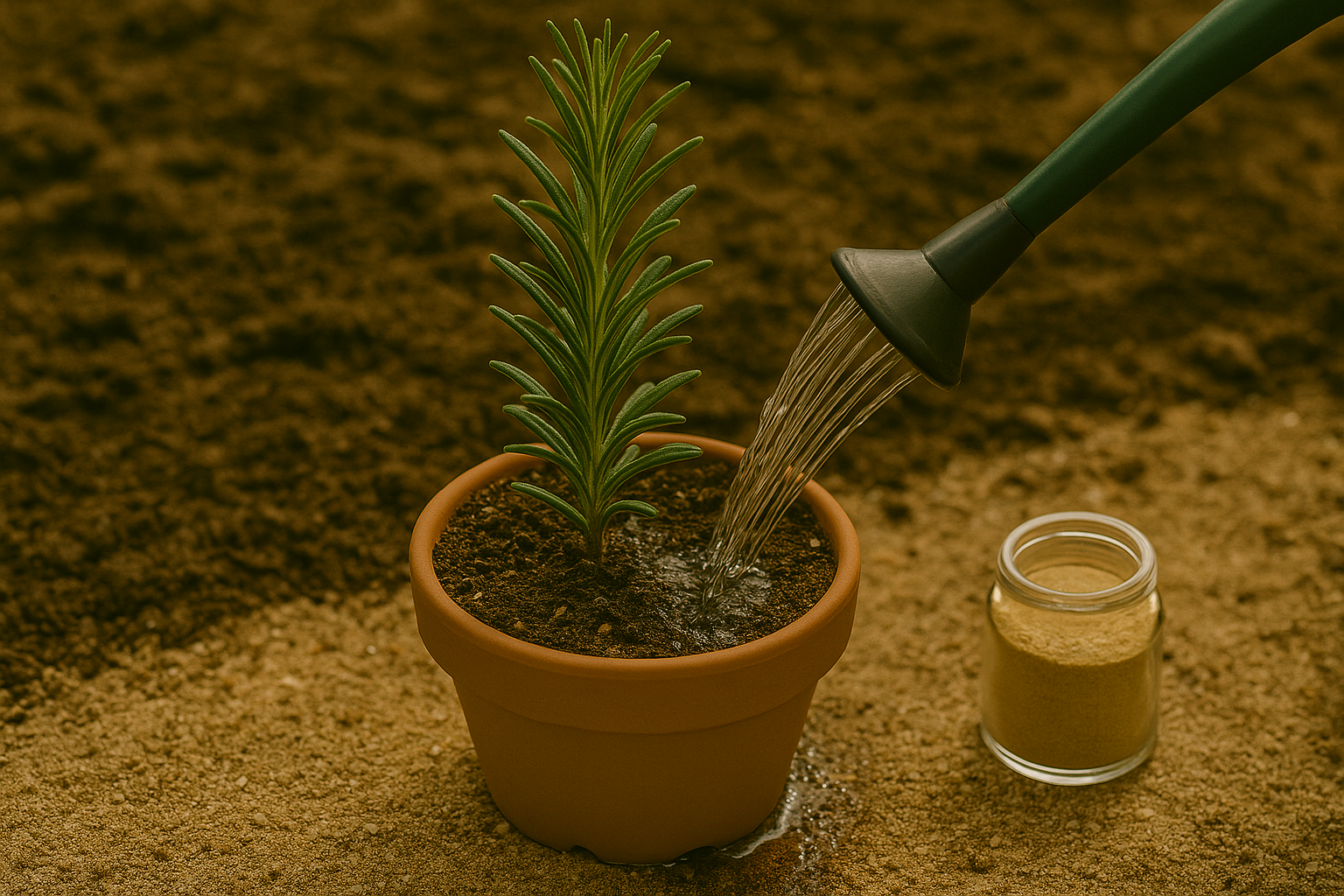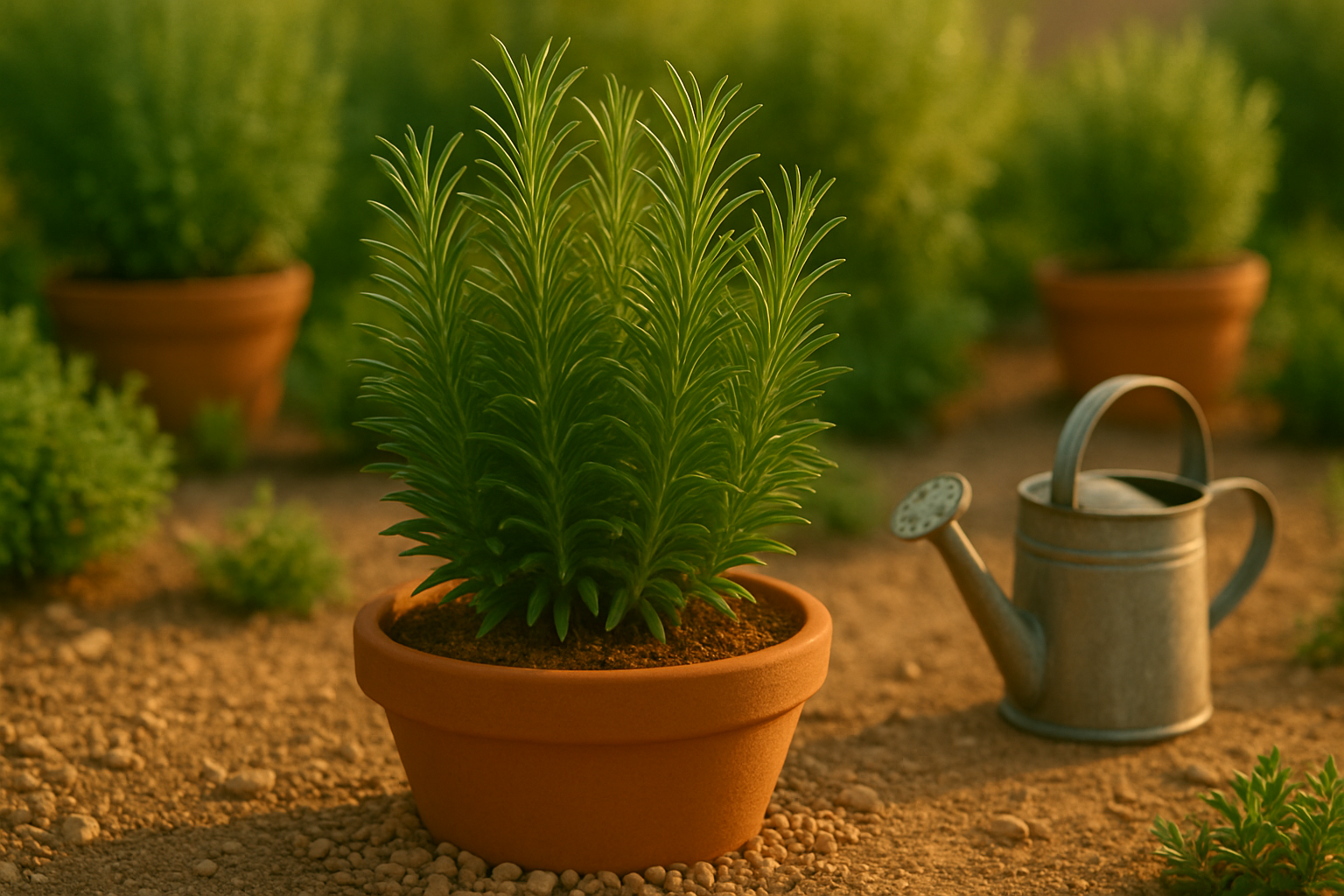Understanding Rosemary’s Watering Needs

Rosemary is celebrated for its resilience, thriving as a hardy Mediterranean herb that’s well-adapted to dry, sunny climates. Thanks to its drought-tolerant nature, rosemary is less needy than many garden plants, but that doesn’t mean it can simply be ignored once planted. Proper watering is key to maintaining healthy growth, robust flavor, and a long lifespan—whether your rosemary lives in a garden bed or a patio pot.
Overwatering is one of the most common mistakes and often leads to root rot, wilting, or lackluster leaves, so understanding the plant’s needs is essential. In-ground rosemary generally benefits from deep watering every couple of weeks, especially during dry spells; the established roots can tap into deeper moisture reserves.
On the other hand, container-grown rosemary dries out much faster due to limited soil and increased exposure to wind and sun, requiring more frequent attention—often once the top inch of soil feels dry. Using your finger to check moisture levels is a simple, reliable method, and always make sure pots have proper drainage holes to prevent water from pooling around the roots.
Ultimately, tailoring your watering routine to your rosemary’s location and environmental conditions makes all the difference, helping this aromatic herb stay vibrant and flavorful season after season.
Factors That Affect Watering Frequency
Watering frequency can be tricky because it’s influenced by many interconnected factors. Climate tops the list—hot, dry weather quickly dries out the soil, increasing the need for more frequent watering. On the other hand, rainy, humid conditions might mean watering less or even skipping a few days.
Soil type plays a huge role as well. Well-draining sandy soils let water drain away fast, often requiring more frequent watering, while clay-rich or organic soils retain moisture longer, reducing how often you need to water.
If your garden or containers receive direct, intense sunlight, plants lose water faster through evaporation and transpiration. This may mean watering every day, especially during peak summer months. Conversely, plants in shadier spots need less frequent watering.
The size and material of pots add another wrinkle. Small pots dry out much faster than large ones. Materials matter too—terracotta pots are porous and encourage rapid evaporation, so they usually need more frequent watering compared to less porous options like plastic or glazed ceramic.
Your plant’s location is important as well. Outdoor plants are exposed to changing weather and light, while indoor plants are shielded from sun and wind, so they generally dry out slower and need less water.
Seasonal changes can’t be ignored either. During the active growing season (typically spring and summer), plants take up more water, so you’ll need to increase watering frequency. In their dormant or winter phase, their thirst slows down, so overwatering becomes a real risk.
The best tactic is to observe your specific conditions closely—check soil moisture with your finger, keep an eye on weather forecasts, and adjust your routine accordingly. Ultimately, matching your watering habits to each plant’s needs and environment is the secret to a thriving, stress-free garden or houseplant collection.
How to Tell If Your Rosemary Needs Water
Knowing when your rosemary needs water is key to keeping this hardy herb healthy, especially if you’re growing it indoors or in containers. A thirsty rosemary plant often shows clear signs: its leaves may wilt and droop, taking on a dull, almost grayish cast instead of their usual vibrant green.
If you notice the soil feels dry to the touch or is pulling away from the sides of the pot, your rosemary is probably due for a drink. However, it’s equally important not to overdo it—rosemary hates soggy soil, and overwatering is a leading cause of problems.
Too much water can cause leaves to yellow, and you might even see wilting despite the soil being wet, which is a red flag for possible root rot, a fatal issue for most herbs.
Using the Finger Test
The best way to strike the right balance is by using the “finger test”: stick your finger about an inch into the soil. If it feels dry at that depth, it’s time to water. If it’s still moist, hold off and check again in a day or two. This simple step prevents both underwatering and overwatering, helping your rosemary thrive year-round.
Remember, rosemary prefers to dry out a little between waterings, so always check the soil before reaching for the watering can. By paying attention to these signs and regularly checking the soil, you’ll ensure your rosemary stays healthy, fragrant, and ready to snip for your next recipe.
How to Water Rosemary Properly

When it comes to watering rosemary, deep and infrequent is better than light, frequent splashes. Rosemary’s roots prefer to dry out slightly between waterings, as soggy soil can quickly lead to root rot, especially in pots. Deep watering encourages roots to grow downward, making the plant more drought-tolerant.
To water rosemary properly, wait until the top inch of soil feels dry—test it with your finger. Then, slowly water the base of the plant until the soil is moist throughout but not drenched. For most garden rosemary plants, this means watering deeply about every 1 to 2 weeks, adjusting based on rainfall and high summer heat.
In containers, rosemary may dry out more quickly; still, let the top inch of soil dry before thoroughly watering. Use pots with drainage holes and never let the plant sit in excess water—empty saucers promptly.
For garden beds, plant rosemary in well-draining soil, and consider mixing in sand or gravel to improve drainage if needed. One real-world tip: avoid overhead watering, which can promote disease—instead, direct the stream to the roots.
In hot climates or during heatwaves, check plants more often, but always err on the side of underwatering rather than overwatering. By giving your rosemary a good soak less often and letting the soil breathe in between, you’ll keep it healthy, aromatic, and thriving season after season.
Optimizing Soil, Sunlight, and Drainage for Happy Rosemary
To keep your rosemary thriving, start with the right soil—well-drained, loamy, or sandy types are ideal, as they closely mimic rosemary’s natural Mediterranean habitat. If your garden soil is heavy or tends to retain water, mix in coarse sand or small gravel to promote drainage and prevent soggy roots, which can quickly lead to root rot.
For those growing rosemary in containers, drainage is even more critical. Always choose pots with several drainage holes at the bottom and layer them with a bit of gravel before adding your soil blend.
Rosemary loves sunlight and needs at least 6 to 8 hours of direct sun each day; place your pots or garden beds somewhere that captures both morning and afternoon rays. Remember, the sunnier the spot, the faster the soil dries, which may mean watering your plant more often—just make sure the top inch of soil dries out between waterings.
Amending your potting mix with perlite, pumice, or extra sand further improves drainage and helps maintain this balance. By paying attention to these simple details—well-drained soil, full sun, and good airflow—your rosemary will reward you with lush, fragrant growth all season long.
Adjusting Your Watering Schedule Through the Seasons
Changing your watering schedule as the seasons shift is key to keeping your rosemary happy and healthy all year round. In summer, when rosemary grows most actively and temperatures soar, you’ll need to water more frequently—about once or twice a week if it’s in well-drained soil outdoors. Check the top inch of soil; if it feels dry, it’s time to water. Early morning or late evening is best so water doesn’t evaporate too quickly.
In winter, rosemary enters a slower growth phase. For outdoor plants, rain often takes care of watering needs—just make sure the soil drains well and doesn’t stay soggy. Indoor rosemary in winter needs special attention because dry air from heating systems can dry out the plant faster than you expect. Mist the leaves occasionally and keep the pot in a bright, draft-free window. Reduce the watering frequency—wait until the soil is dry to the touch before adding more.
No matter the season, resist the urge to water on a strict schedule. Instead, monitor your plant and soil closely for signs of thirst or excess moisture. Following these seasonal cues is the best way to avoid common mistakes like root rot from overwatering or leaf drop from underwatering.
Troubleshooting Common Watering Problems
Watering plants may seem simple, but common issues can sneak up on even the most careful gardeners.
Root Rot
Root rot is often caused by overwatering or poor drainage. Always check that your pots have holes and let the top inch of soil dry out before watering again.
Powdery Mildew
Powdery mildew, a white, dusty fungus, thrives in damp, crowded conditions. Improve airflow around your plants and water at their base—not on the leaves—to help prevent it.
Browning Tips
Browning tips can signal that your plant is either getting too much or too little water. Test the soil with your finger to decide whether to water more or less. Consider switching to distilled water if you suspect mineral buildup.
Stunted Growth
Stunted growth can result from inconsistent watering routines, which stress your plants and limit nutrient uptake. To avoid these issues, keep a watering log or set phone reminders to stick to a regular schedule. This small habit can make a big difference in spotting patterns and helping your plants look their best.
Consistent, mindful watering is the secret to thriving, healthy plants.
